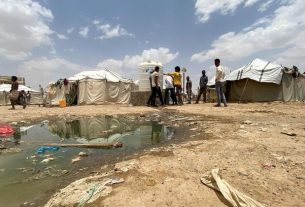A relentless wave of natural disasters is hammering the Australian economy, compounding a global crisis that is far more costly than previously believed.
New findings from the United Nations Office for Disaster Risk Reduction (UNDRR) reveal that global disaster-related losses are nearing US$2.3 trillion—more than 11 times earlier estimates. Financial losses from natural catastrophes have doubled in the past two decades alone.
Australia: A Nation Under Pressure
Australia is among the hardest-hit developed economies in 2025. According to Treasury data, natural disasters have already cost A$2.2 billion in just the first half of the year. In a stark illustration of escalating weather volatility, wild weather-related insurance claims have already exceeded all of 2024’s total—and it’s only June.
Autumn brought 15,840 wild weather claims to NRMA Insurance, largely driven by the destructive path of Ex-Tropical Cyclone Alfred. NRMA’s Executive General Manager Luke Gallagher described the impact as “devastating,” warning that weather events are becoming both more frequent and more severe.
Economic Growth Stalls
The damage has filtered through to the broader economy. Australian GDP growth slowed to just 0.2% in Q1 2025, the weakest since 2017, according to the ABS. Sectors like mining, tourism, and shipping saw the sharpest declines.
Treasurer Jim Chalmers acknowledged the blow from Cyclone Alfred and widespread flooding in northern Queensland, but struck a hopeful tone, saying: “Growth is softer than we would like it to be, but I’m confident it will accelerate.”
Spending trends reflected the disruption. National expenditure fell 0.3% in March, with Queensland hit hardest—posting a 1.3% drop due to cyclone-driven shutdowns. Food spending spiked 2.9% as residents stockpiled supplies ahead of the storm.
Disaster Recovery Dominates Budgets
The federal government has allocated A$13.5 billion to disaster recovery in 2024–25, up from A$11.4 billion earlier in the year. State governments are also ramping up support:
- Queensland: A$2.7 billion in 2024–25, and A$6.1 billion through 2029
- New South Wales: A$4.2 billion across forward estimates
However, experts warn this is not sustainable.
“Governments face a tough trade-off,” said EY Oceania Chief Sustainability Officer Mathew Nelson. “Funding disaster recovery at this scale forces cuts elsewhere or increases debt. Neither is a desirable outcome.”
Businesses Bear the Brunt
For businesses, the risks are multidimensional. Nelson outlines three key threats: property damage, loss of operations, and economic ripple effects.
Supply chains, in particular, are vulnerable. Dr. George Panas from the University of Melbourne explains that weather-related disruptions—domestic or overseas—can cause cascading delays in production and delivery.
“Extreme weather affects everything from transport infrastructure to inventory arrival times. A single typhoon in China can delay goods across Australian shelves,” Panas noted.
To survive, businesses must invest in resilient, flexible supply chains. Panas recommends mapping risk zones, building redundancy, and preparing for worst-case scenarios.
With natural disasters increasing in scale, frequency, and cost, Australia faces a new economic reality—one where recovery planning must sit at the heart of national, state, and corporate strategies.



